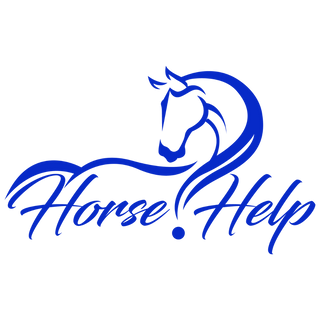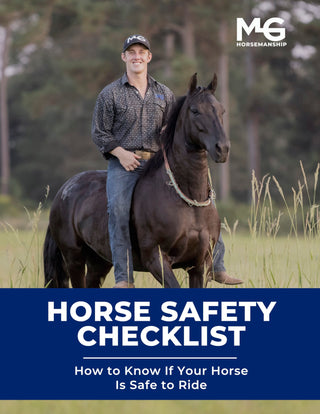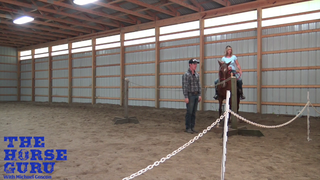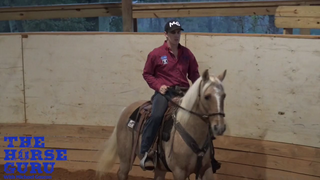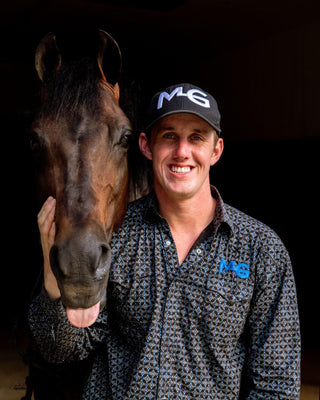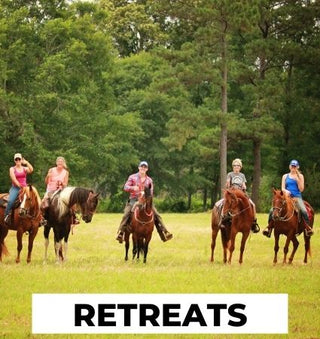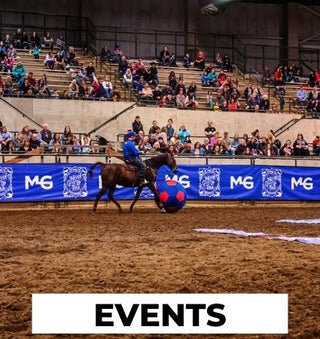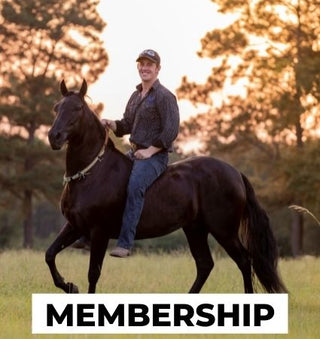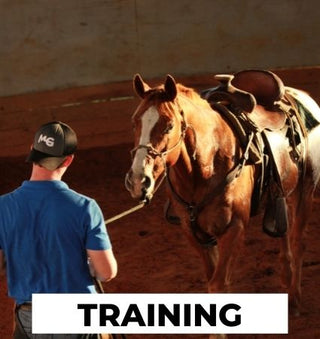Watch the Video Here or continue reading below!
In this clinic session, Michael Gascon dives deep into two key exercises designed to enhance control, responsiveness, and smooth movement in horses—especially for maneuvers like side passes, spins, and cantering. These exercises develop a stronger connection between a rider's hands, legs, and the horse's hindquarters, helping the rider shape the horse with minimal effort.
Exercise 1: Hip Control on the Fence
The first exercise focuses on moving the horse's hip using coordinated rein and leg cues. Riding along the fence line, the rider puts the horse's nose into the wall, pulls with the inside rein (e.g., right rein when moving right), and kicks with the corresponding leg (e.g., right leg). The goal is to engage the horse's hindquarters without losing forward momentum. As the horse begins to resist, the rider should maintain the cues—pull and kick—until the horse yields its hip and moves forward. Then, release and repeat. This teaches the horse to yield its hindquarters at any gait, which is vital for obstacle work and changing directions cleanly.
Why Hip Control Matters
This drill is especially valuable when negotiating obstacles like gates or narrow passages where a horse needs to swing its hindquarters without moving forward or sideways unintentionally. The more responsive the horse becomes to this combination of pressure and release, the more precisely the rider can place the horse in challenging situations.
Exercise 2: Steering into Softness
The second key component of this session is understanding the balance between rein pressure and the horse's give. When a horse resists rein pressure, the rider should pull harder in the direction of the bend until the horse's butt gives. The goal is not to turn the horse but to find that sweet spot where the horse softens in the face and yields the hindquarters. Once the horse responds correctly, the rider should release the pressure and go forward.
Gascon emphasizes that "there hasn’t been a horse yet who can give its butt and run off at the same time." This underscores the importance of using softness and yield to manage energy and direction. Riders who learn to steer this way can better handle a horse at any speed and develop finesse in advanced maneuvers.
Applying It to the Canter
Once these two exercises are understood, they translate directly to smoother cantering. Many riders struggle with a rough trot and fail to commit to the canter, which leads to an even bumpier experience. Gascon explains that the key is giving the horse more rein so they can lower their head and extend their stride. Holding the reins too tightly causes the horse to elevate its head, shorten its back, and become uncomfortable.
Riders should focus on heels down, weight in the stirrups, and steady lower legs to stabilize their seat. Grabbing the horn is not a sign of failure—it’s a stepping stone to gaining confidence. With these mechanics in place, horses begin to canter more smoothly and willingly.
From Push to Finesse Obstacles
Gascon distinguishes between push obstacles (like tarps and water) and finesse obstacles (like gates or side-passes). Push obstacles are about courage and momentum, and even green horses can be taught to move through them early on. Finesse obstacles, however, demand subtlety, calmness, and control. The exercises outlined above form the foundation for navigating these more technical challenges.
By building responsiveness in the hindquarters and teaching softness through rein pressure, riders can place each hoof where they want it—one step at a time. This level of control transforms obstacle work from chaotic to confident.
Final Thoughts
Riding with softness and intention takes time, patience, and practice. But once you develop that relationship between your reins, your legs, and your horse’s body, everything from a smooth canter to a clean side-pass becomes achievable. Whether you’re opening a gate or working on advanced maneuvers, these foundational exercises are the key to better horsemanship.
